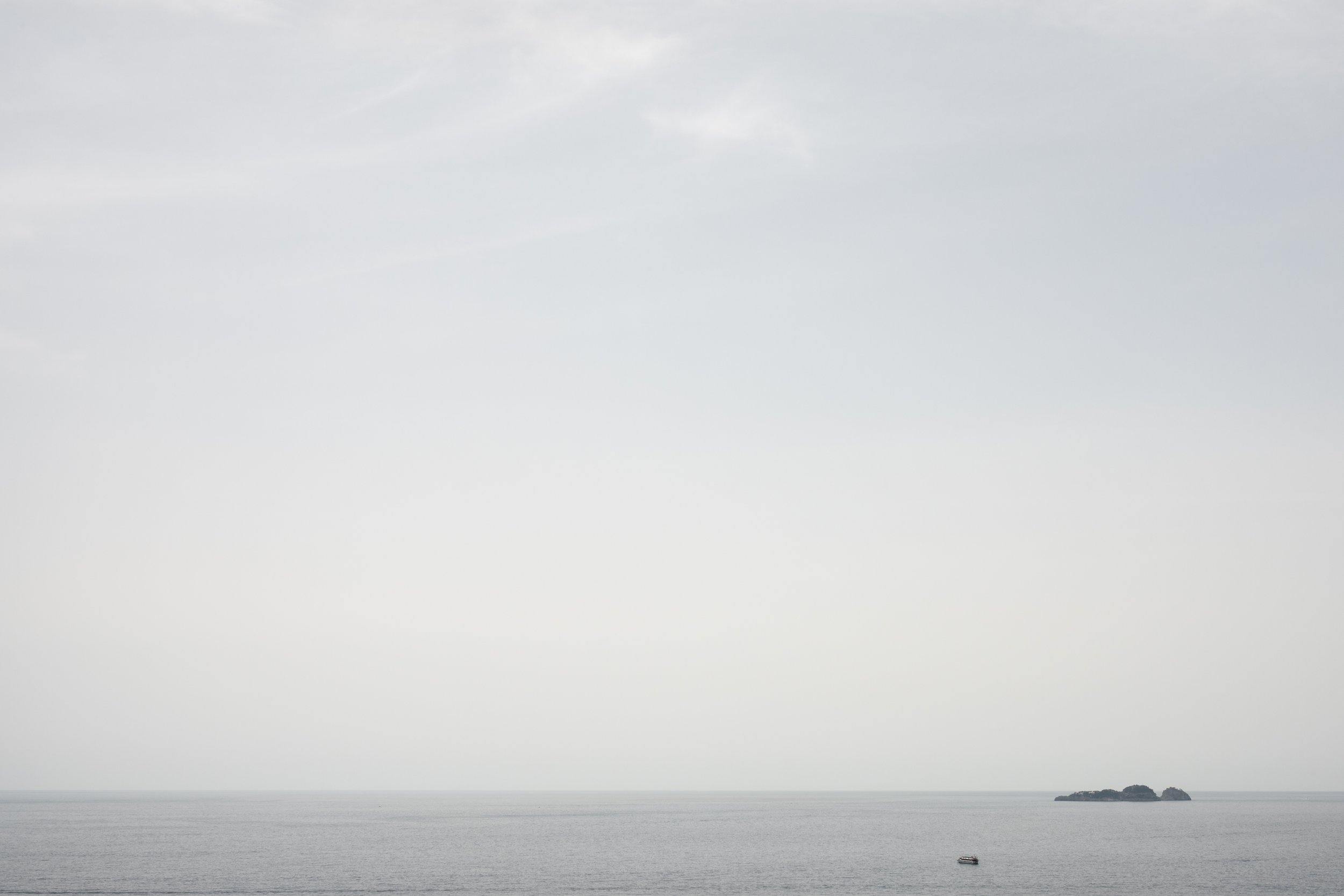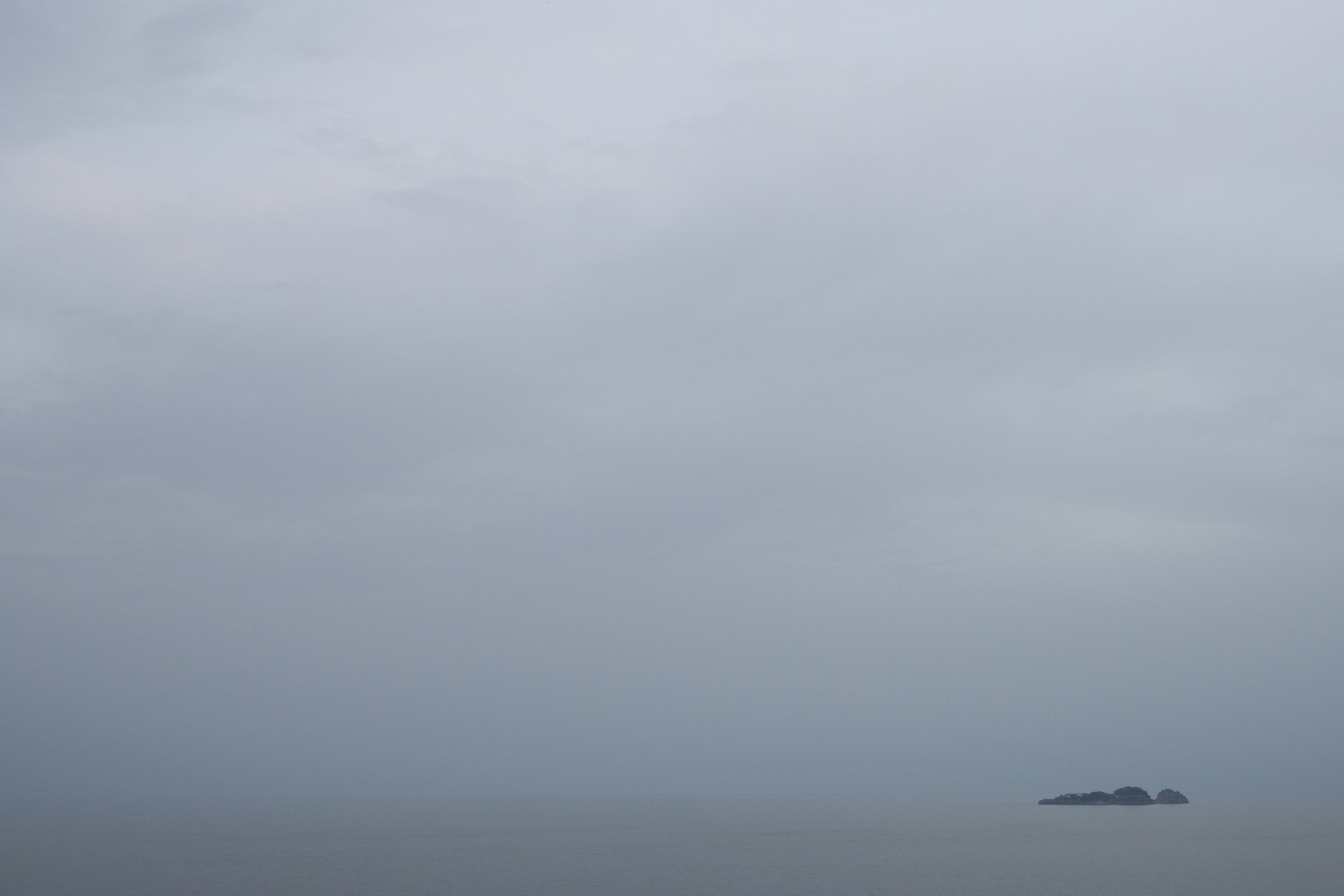L’Isola Li Galli
L’Isola Li Galli lie just off the coast, halfway to the island of Capri. The historic name of this archipelago is Le Sirenuse. According to Greek mythology, they were once the home of the Sirens, whose exquisite and bewitching songs spellbound sailors and caused them to crash their ships on the rocks. I photographed these islands over two years. Please find my essay on creating this work at the end of this page.
L’Isole Li Galli
As the boat bounced atop the water, I clutched my seat with one hand and pulled my sun hat on a little tighter with the other.
“Can we get closer to the Li Galli islands, please?” I asked our young driver.
“Prego!”
We cut in toward the archipelago. In the midday sun the islands’ mystery all but disappeared. From Positano, they had looked like a single island, but here on the water they revealed their true selves: three distinct islets with imposing rocky shorelines. They didn’t appear much different from other Tyrrhenian islands here, but I had learned of their layered story anchored in mythology and history.
We were just off the coast, halfway to the island of Capri. The historic name of the archipelago is Le Sirenuse. According to Greek mythology, it was once the home of the Sirens, whose exquisite and bewitching songs spellbound sailors and caused them to crash their ships on the rocks. In Homer’s The Odyssey, he tells of the lure of the Sirens and how Odysseus thwarted them by having his sailors plug their ears with wax and bind him to the mast of his ship to keep him from steering to the rocks. In our boat, moving over the water where the Sirens’ song moved, I envisioned how easy it would be to crash in the narrow and choppy channels between these islands. I hadn’t been anywhere near this close on my first visit to Positano. Now, here, I thought about the Sirens, who were originally depicted as enchantingly beautiful women, but whose form in stories changed over time. They appeared with bird feet and feathers — possibly a punishment from Aphrodite, the goddess of love, who did not approve of the Sirens’ preservation of their virginity. Today the islands are called Li Galli, a name that acknowledges this history: “Galli” is rooster in Italian.
Each island has its name: Gallo Lungo, La Rotunda, and La Castelluccia. Gallo Lungo is by far the largest, inhabited since Roman times. In the 13th century, Charles II, King of Naples, built a prison and a watchtower from which his soldiers could scan the coast for pirates. From the water, I looked up past the cliff edge and could just make out the top of the watchtower.
In the 19th century, ownership of the islands passed to Positano, and in 1924, the town sold them to the Russian dancer and choreographer Léonide Massine. Massine restored the watchtower on Gallo Lungo, making it a dance studio and open air theater, and he built his home, Villa Grande, on the Roman ruins. Massine’s vision was to have a center of art on the island. He envisioned bringing together poets, writers, dancers, painters, and sculptors. The simple fishing village of Positano and the Li Galli islands started captivating visitors. In the 1950s, John Steinbeck published an essay in Harper's Bazaar, writing, “Positano bites deep. It is a dream place that isn’t quite real when you are there and becomes beckoningly real after you have gone.”
Shortly after Massine’s death, in 1979, another famous Russan dancer, Rudolf Nureyev, purchased the islands. Nureyev brought yet more star power: he invited his famous friends to stay and hosted dance performances on the sweeping terraces. At the same time, Italy’s most celebrated opera and film director, Franco Zeffirelli, took up residence at Villa Tre Ville, which is cut into the cliffs of Positano and overlooks Li Galli. From the boat, I looked back to spot Villa Tre Ville in the distance, imagining when this was the stretch of sea between Nureyev’s and Zeffirelli’s respective arts.
I had noticed Li Galli as soon as I arrived in Positano on my first visit, in September of 2021, its dark form a stark contrast to the colorful buildings constructed in the coastline cliffs. Many say that the best view in Positano is from the sea looking back at this breathtaking town. I saw the extraordinary beauty in this view, but I was drawn to look out, to seek a quieter and more contemplative scene. The islands were luring me. I didn’t yet know their name, and certainly not their rich history, but I trained my camera on their form. I loved how the hills appeared almost anthropromorphic, like the hips of a person lying on their side in the water. At night, a light on Gallo Lungo flickered. In the daytime, the sunlight shimmered on the water, hovering around the islands, giving their midst a sheen.
Several times daily I climbed with my camera up a steep path to my vantage spot. It was just across the street from stairs upon stairs that led to the famous hiking trail called the Path of the Gods. Once there, I would set up, placing my elbows on the railing right at the edge of the cliff. Each time, trying to stand in precisely the same spot, I would lean over with my camera. The repetition of climbing the path in order to watch the subtle changes in light started to have a calming effect on me. After the struggle of the pandemic, I was one of many looking for this salve. Even deciding to travel had been an ordeal, as Covid cases were spiking. I was grateful to be here watching this island and photographing it each day. I started wondering: what was its name? I could see those lights at night. Was someone living there? In search of information, I asked Irma, the friendly concierge at the hotel.
From the window of the lobby, I pointed out over the water. “What is that island?”
“They are Li Galli,” she said — so fast that I couldn’t understand at all or hear that she used “they.” After she repeated herself a couple of times, my confusion about what I was photographing was now obvious to us both. She explained that they were in fact three islands, and that they were much beloved by the people of Positano. She added that they were still privately owned.
“Please take our book!” she said, thrusting into my hand a beaten-up copy of The Siren Isles:“Li Galli.” I spent a happy afternoon discovering the islands’ deep, nuanced history from the pages of that out-of-print book.
On the morning I had to leave for home, I handed the book back to Irma with my thanks, knowing that there was more for me to uncover. Once back in Boston, printing my images, I saw again the delicate light glistening around the islands, this time as it revealed itself on my favorite Hahnemuhle paper. Steinbeck was right. The place “becomes beckoningly real after you have gone.” The images made me ache to return. I wanted to photograph Li Galli as the light was fading. I wanted to capture their dark form emerging from the deepest of blues as the sky faded to black.
In the boat, eight months later, the waves did not allow me the calm reflection I had enjoyed when photographing from high on the cliff. The midday light saturated the waters and rocky shores. I was happy to be this close to the islands, but I favored my view from afar and was excited to get back there that evening. Known for the ethereal sound of the Sirens, Li Galli had called to me in a different way up there, had anchored me with its distant dark form on the shimmering Tyrrhenian Sea.
Sources:
The Siren Isles. Li Galli, by Romolo Ercolino (Longobardi, 1998)
Fiorucciartrust.com
Mymodernmet.com













